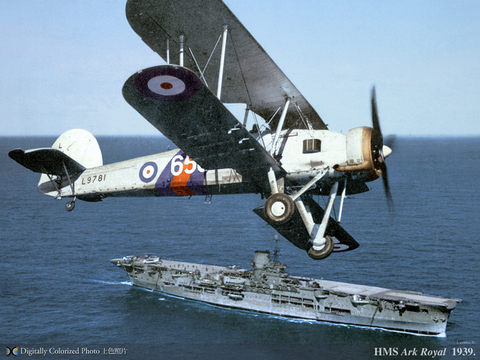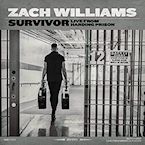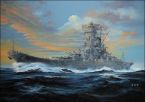HHI
Matrix Trooper

Posts: 59
Joined: 9/13/2009
Status: offline

|
[I don't disagree with what you have to say about I-boats - they were large and slow and could not dive deeply. But does this mean that:
- an I-boat could not not sink a badly damaged US carrier and a destroyer in the same salvo and then get away?
- a US carrier could not be hit by single torpedoes on two different occasions in the same year by two different I-boats that both escape?
- an I-boat could not sink a US carrier and damage a destroyer (which eventually sinks) and a battleship and then successfully escape?
The OP seems to be complaining about a game result that must have seemed to the US Navy, in 1942 at least, like a depressingly routine occuranc]
When operating in submarine infested waters, bad things can happen, particularly when the opponent, even in an inferior submarine, has the Long Lance. This weapon had titanic range and over 50 knot speed. The real issue is that all of the advantages of the I boats are carefully represented, none of the disadvantages. When cruising with fast warships, any ASW ship is at a disadvantage. They are running around at 30 knots trying to maintain a screen around a maneuvering capital ship. Such a task force depends on speed and an effective zig-zag pattern, which, in the case of aircraft carriers, must be broken to launch aircraft. Hydrophones and sonar do not work well at 30 knots. This really comes into effect with the idea that the I boats could be an effective commerce warrier. There it's limitations really would have been apparent, due to the much slower speed of the escorts. Again, none of these issues are represented either in the hard code or the data base. Why not? Well, we all know that the people who did this work are well aware of the these problems with the I boats, yet they choose to ignore them. There is a decided JFB bias.
Yes, in real life, the I boats had some successes. They torpedoed and sunk the Yorktown and the (I think) Sims, both heaved-to. They got a torpedo into the North Carolina, whose underwater protection was inferior due to Treaty limitations and they got the Wasp which was forced to operate in submarine infested waters. I did not complain about the specific incident that initiated this line. I simply stated that this sub/ASW was not properly represented. It definitely is not. It is decidedly biased toward the Japanese.
This whole bias continues throughout the game. The prewar US battleships are treated as though they were manned by seaman recruits, when in reality, they were every bit as well trained as the Japanese, perhaps better. However, the emphasis was on gunnery, not torpedo attack. Later in the war, the effects of bombardment have been toned down to the point that it is a joke. While the bombardment was ineffective at Tarawa, US naval officers were capable of learning their lessons. The bombardment of atolls at Kwajalein and Eniwetok was extensive and effective. The assault force destroyed the Japanese forces with limited casualties due to the devestating effect of the bombardment. The whole bombardment model is mistreated. The real effect of bombardment, both by ships and by aircraft, should be primarily to reduce the fortification level of the target. Instead, you get runways that are put out of commision ten times over and losses sustained by, primarily, non-combat units. Why is this? The people working on this game have a knowledge base probably several magnitudes higher than mine. They know everything. Simply put, modeling the reality of the situation does not work with the JFB bias.
Starting in early 1943, the US developed and used parachute fragmentation bombs on airfields in New Guinea with absolutely devastating effect on Japanese aircraft. How come this isn't represented. Continuing on, the US had hugely superior radar fire control (example, Washington vs. Kirishima). In the game, nothing happens until there is a visual sighting, usually by the Japanese. JFB bias.
The B-29's are virtually useless. Now, in reality, we all know high altitude precision bombing was ineffective on the home islands due to heavy cloud cover, the effect of the jet stream at 30,000 feet and a lack of adequately trained radar operators. This is certainly accurately represented in the game. You can't hit sh*t. Furthermore, even after getting fighter support into Iwo Jima, the attacks are not cohesive and aircraft stagger in, unescorted, and get beat up. OK, fine. It doesn't work and it didn't work IRL. But where are the incendiaries? B-29s can't hit the ground in low altitude night attacks in the game. How is the tinder box nature of Japan's great cities represented? Not at all. JFB bias.
Speaking of incendiaries, with the advent of napalm, the effect of fighter-bomber attack on LCU's should be much more effective. Doesn't happen. JFB bias. Attacks by land based aircraft against merchant ships and destroyers should be greatly improved with the advent of the 4.5" rocket. Doesn't happen. JFB bias.
_____________________________
HHi
|
 Printable Version
Printable Version









 Subs miss plenty of times...
Subs miss plenty of times...




 5 missed...
5 missed...










 New Messages
New Messages No New Messages
No New Messages Hot Topic w/ New Messages
Hot Topic w/ New Messages Hot Topic w/o New Messages
Hot Topic w/o New Messages Locked w/ New Messages
Locked w/ New Messages Locked w/o New Messages
Locked w/o New Messages Post New Thread
Post New Thread